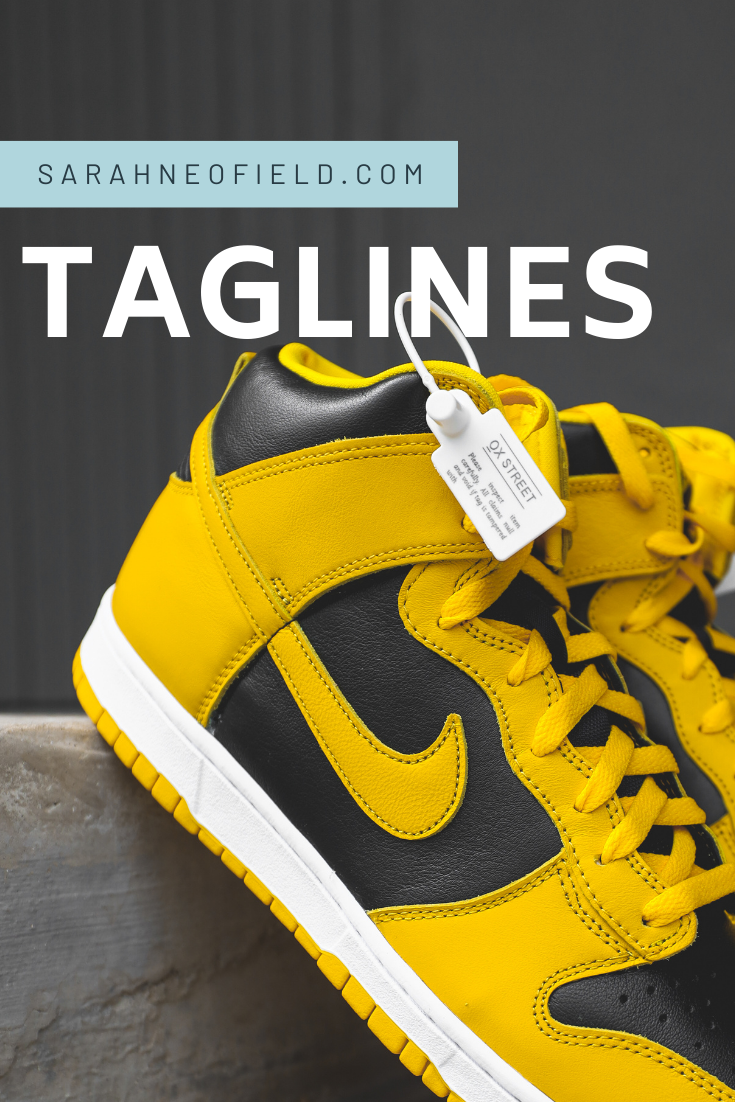A strong tagline was the one thing all of the New York Times bestsellers examined in my analysis of bestselling book descriptions had in common. Taglines were also the feature shared by the majority of the bestselling satirical novels I examined. And yet, just one third of the less successful novels in the same category included a tagline in their descriptions.
Of all of the ingredients of a book description, the tagline has to be one of the most accessible. Your book doesn’t need to have won a major prize or sold a million copies or had a celebrity endorsement or a write-up in a well-respected journal to have a snazzy tagline. So it’s worth spending a few minutes learning how to craft a tagline that will set your book apart from the less successful books in your genre – and may even catapult it into more exclusive company.
What is a tagline?
You might have heard of a logline – a phrase that sums up what a book (or movie) is about. A logline is a tool for ‘selling’ your book to a potential publisher – not to a reader.
A tagline is a catchphrase that captures something of the book’s feeling.
You can think of a tagline like an advertising slogan. “Just Do It” doesn’t tell you anything about shoes. But it does tell you a lot about what you might feel wearing those shoes.
According to Live Write Breathe, a tagline should be:
- Brief – no more than one sentence
- Catchy – make it memorable
- Intriguing – get your reader interested
- Truthful – don’t promise anything you won’t deliver
How can I write a tagline?
Penning and Planning offers the following suggestions on how to write one:
- Ask a question (like Adam Croft’s “Could you murder your wife to save your daughter?“)
- Play with words (like Rachel Abbott’s “Everyone must play… (The Murder Game)“)
- Use emotive vocabulary (like Sarah A. Denzil’s “Her child has the answers. But he can’t tell her the unspeakable.“)
- Raise the stakes (like Chris Carter’s “Cross your heart and hope to die… quickly“)
- Keep it simple (like Gillian Flynn’s “There are two sides to every story“)
A good tagline isn’t just something to use on the back of your book. You can use it as part of your email signature, on your marketing materials, social media profiles. Super successful books even find their taglines turned into merch.
Coming up with a good tagline can be a form of promotion itself. I’ve run polls on Instagram and Twitter to get feedback from my readers.
Here’s the tagline for my first novel, Number Eight Crispy Chicken:
The immigration minister has been detained.
And here’s the tagline for my latest, Propaganda Wars:
The most powerful messages are the ones you don’t see.
In my next post, we’ll take a look at loglines – how they can be of use even to indie authors uninterested in selling their works to publishers, and how we authors can learn from the movies when it comes to writing successful loglines.

Excellent, thanks
Thank you Anne! Hope you found it useful!